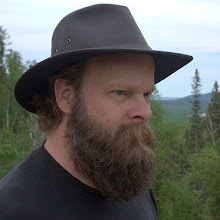I like taking a simple form and exploring variations upon it. That's one of the appeals of this blanket blog that inspire me onward. As you get to know a form you can experiment within its constraints. Something that seems simple and repetitive may contain infinite variety.
Structure is one of the things that draws us into music, for example. Most popular songs include several verses (V), a chorus (C) in a different but related theme, and often a bridge section (B) introducing a third related theme. These might follow the sequence V-C-V-C-B-C. Songwriters return to this basic structure again and again because it provides listeners with a reference point. Even a new song can be predictable. The combination of predictability and novelty entertains us, and gives us cues to the rhythm and pace of the song.
Classical music commonly uses several musical forms. One of them, the rondo, follows a structure similar to contemporary song structure: A-B-A-C-A-B-A. Each section presents a distinct theme. There may be additional ones (D, E, F), but ultimately the music always returns to the beginning theme.
I have experimented with a particular form in some of these squares, treating each yarn as an individual theme. Sometimes I have tried returning to the same themes symmetrically as in a rondo, but these mitred squares seem more interesting if they culminate in different colours from which they started. The apex of the square focuses the attention, and the colours there, even though they consist of fewer stitches, draw as much attention as the long outside rows, which form a kind of foundation.
So I have invented an original form. I think the first time I used it was in Square 48. I was establishing a colour rhythm, ripples of light and dark moving across the square the way moonlight draws your eye across the layers of a night landscape.
Since then, I have tried variations on that form. This time I used the square to illustrate it. I chose five solid coloured yarns (dark green, grey, vermilion, purple, and apple green) and five variegated yarns in colours closely related to the first five.
I followed a few simple rules in establishing this form. Each colour is used exactly twice, and each never appears next to any other colour more than once. The first three rows establish the first three colours; after that each new colour is followed by an old colour and vice versa, until the last three rows wrap up the last three colours.. I like how it establishes rhythm and harmony among contrasting colours. This square is odd, but it illustrates the pattern well.
A-B-C-A-D-B-E-C-F-D-G-E-H-F-I-G-J-H-I-J.
